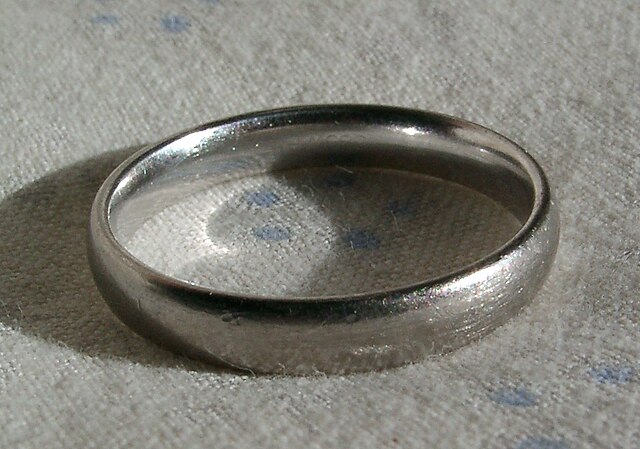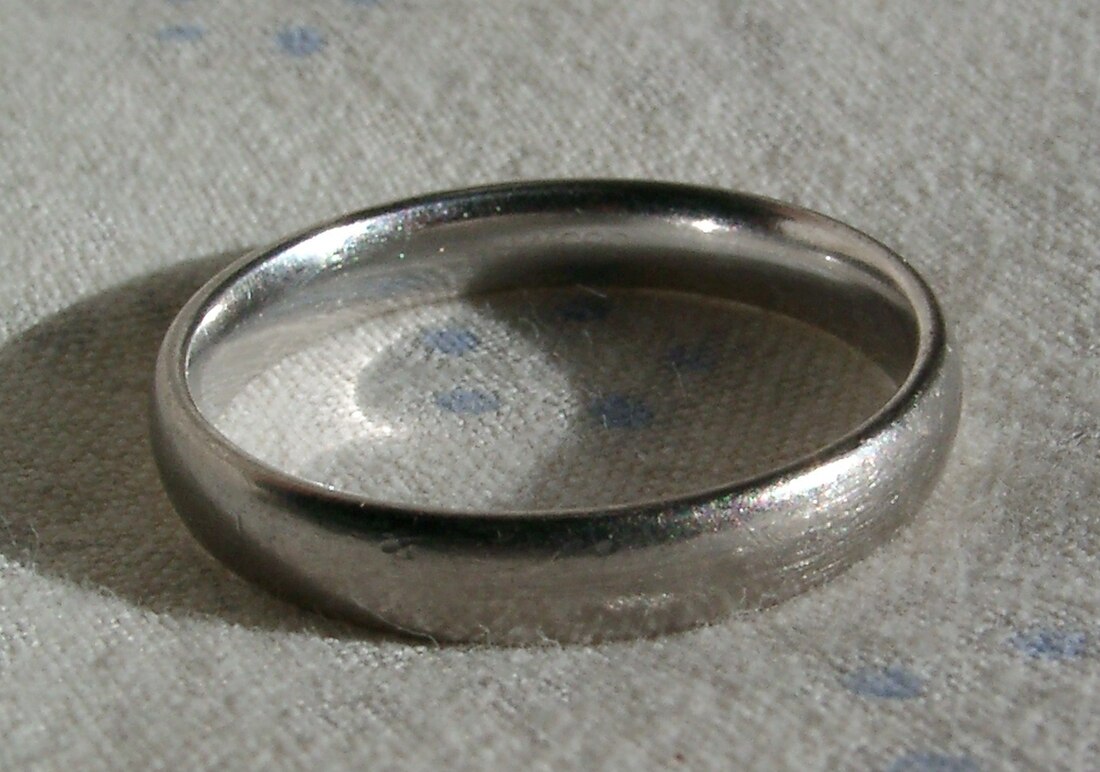Top Qs
Timeline
Chat
Perspective
White gold
Alloy of gold and a white metal From Wikipedia, the free encyclopedia
Remove ads
White gold is an alloy of gold and at least one white metal, usually nickel or palladium.[1] Like yellow gold, the purity of white gold is given in carats (karats). It is often used on jewellery.[2]

A common white gold formulation consists of 90% wt. gold and 10% wt. nickel.[3] Copper can be added to increase malleability.[4]
White gold's properties vary depending on the metals and proportions used. As a result, white gold alloys can be used for different purposes; while a nickel alloy is hard and strong, and therefore good for rings and pins, gold-palladium alloys are soft, pliable and good for white gold gemstone settings. The highest quality white gold is usually at least 18 karat, and made up of gold and palladium, sometimes with other metals like copper, silver, and platinum for weight and durability, although this often requires specialized goldsmiths.[4]
While some higher-quality white gold alloys retain their shine and lustre, most will be coated with a very thin layer of rhodium. This gives the naturally more-dull white gold a shine comparable to platinum or silver; however the rhodium may wear off over time.[5]
Remove ads
Skin irritation
The nickel used in some white gold alloys can cause an allergic reaction when worn over long periods (also notably on some wristwatch casings).[6] This reaction, typically a minor skin rash from nickel dermatitis, occurs in about one out of eight people; because of this, many countries do not use nickel in their white gold formulations.
White gold alloys made without nickel are less likely to be allergenic.[7]
Remove ads
See also
References
Wikiwand - on
Seamless Wikipedia browsing. On steroids.
Remove ads
